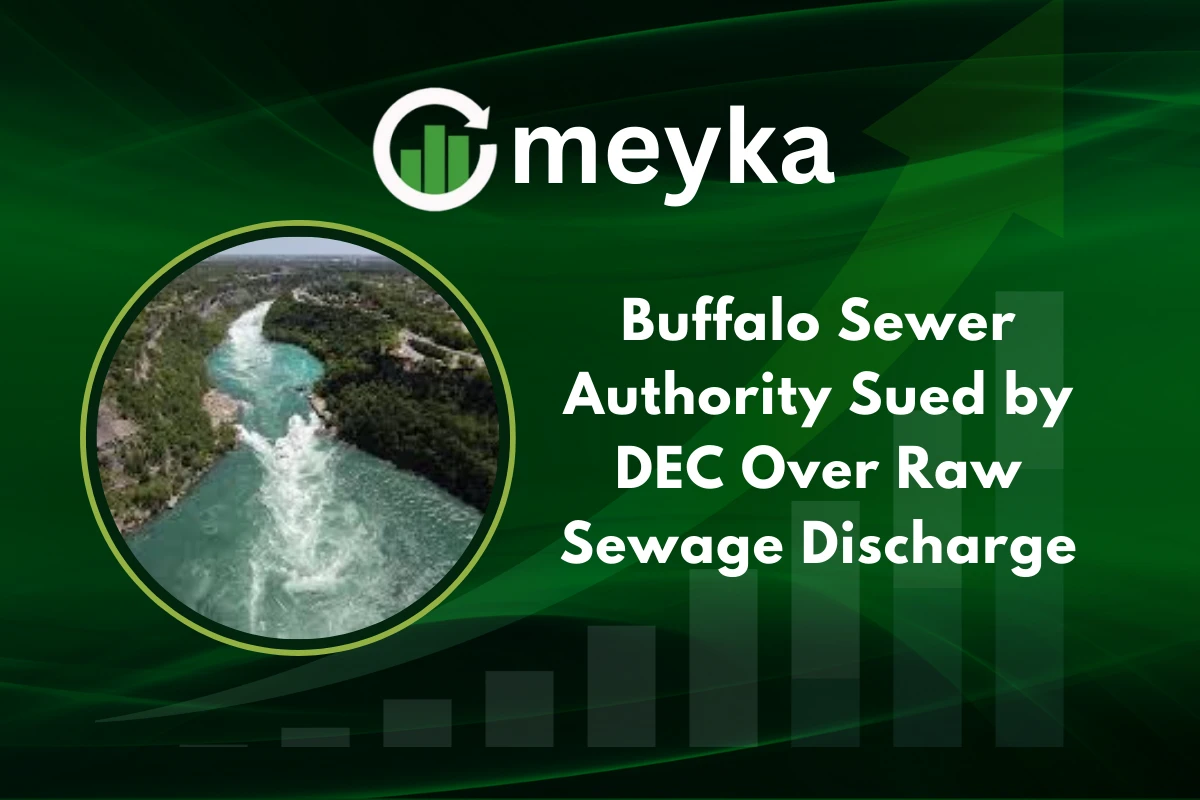Buffalo Sewer Authority Sued by DEC Over Raw Sewage Discharge
The Buffalo Sewer Authority is facing a landmark lawsuit from the New York State Department of Environmental Conservation. The Buffalo Sewer Authority stands accused of discharging millions of gallons of untreated sewage into local waterways. The complaint says these releases harm water quality, fish, and people who live near the rivers.
Why is the Buffalo Sewer Authority being sued?
The lawsuit, filed in the State Supreme Court, alleges multiple violations of New York state environmental law. The complaint claims nearly 2.9 million gallons of untreated sewage and storm runoff enter the Niagara River and other waterways each year.
The DEC also points to unauthorized bypasses that sent between 11 and 78 million gallons of untreated sewage in past years. These figures come from the 19 page complaint and local reporting.
The DEC says the authority missed deadlines in its long term control plan to cut combined sewer overflows, and that the Bird Island Wastewater Treatment Facility committed permit and reporting violations. The filing asks the court for civil penalties and for a revised control plan with firm deadlines to stop further discharges.
What locations does the Buffalo Sewer Authority impact?
The complaint and local reports list waterways around Buffalo that were affected. These include the Niagara River, the Buffalo River, the Erie Basin, Scajaquada Creek, Cazenovia Creek, and the Black Rock Canal. These waters are used for fishing, boating, and some recreation, so spills can affect local jobs and outdoor life.
What does the Buffalo Sewer Authority case mean for residents?
It raises real health and quality of life concerns. Raw sewage carries bacteria, viruses, and parasites that can cause gastroenteritis and other illnesses. Contact with polluted water can bring eye, ear, nose, and throat infections. Long-term pollution can also reduce oxygen in water, harm fish, and damage habitats that local people rely on. Federal agencies and public health studies point to these risks as clear reasons to control sewage discharges.
Neighbors on Buffalo’s west side have reported strong odors near Bird Island and along the waterfront. Those quality of life complaints appear in local coverage and are noted in the DEC complaint as evidence of ongoing problems near treatment sites.
The authority says it is working on upgrades, but residents say action and faster results are needed.
How will the Buffalo Sewer Authority lawsuit move forward?
The DEC asks the court to require the Buffalo Sewer Authority to adopt an amended control plan with updated schedules and to comply with permit limits.
The state seeks civil penalties, and industry reporting notes potential fines of up to $37,500 per day for ongoing permit violations. The legal process can take months, and any court order could include strict deadlines, reporting mandates, and required upgrades.
Quick facts
- The DEC filed a 19-page suit alleging long-running permit and bypass violations.
- The suit cites annual discharges measured in millions of gallons.Bird Island has primary tanks that date back to the 1930s and needs major repairs that could cost tens of millions.
- The authority says it has a 15-year, one billion dollar Queen City Clean Waters Initiative, and that the Bird Island upgrades total about $250 million.
Historical context on Buffalo infrastructure and the Buffalo Sewer Authority
Buffalo’s sewer system is old and built to combine storm water and sewage in the same pipes. That design can overload the treatment works in heavy rain. The Buffalo Sewer Authority and the DEC have worked under a 2014 long-term control plan to reduce combined sewer overflows.
The DEC argues that many planned projects were not completed as expected and that water quality goals remain unmet. That shared history explains why the DEC chose to sue now.
Some industry outlets reported a much larger total for untreated flow through all outfalls, describing an estimate of nearly three billion gallons per year. That figure is much higher than other reports. Readers should note the difference and watch for the official court record for the final accounting.
Public reaction to the Buffalo Sewer Authority case and video context
Many viewers and readers shared the news on social platforms. One X post reads,\
“The Buffalo Sewer Authority is being sued after the New York State Department of Environmental Conservation alleged that nearly three million gallons are being discharged around the city.”
That short post shows how the story landed with neighbors and local watchers.
The Buffalo News and other local outlets have also reported on the odor complaints and the long term infrastructure challenges residents describe.
For visual context, local television posted short news segments that show the Bird Island plant, pier areas and shorelines named in the complaint. Those clips make the scale and the places named in the suit easier to understand for people who watch the local reporting.
What penalties or fixes could follow for the Buffalo Sewer Authority if the DEC wins?
If the DEC prevails, the court could order faster and broader upgrades. That could include new treatment equipment at Bird Island, odor control systems, new overflow controls at dozens of outfalls, and stronger monitoring and public reporting.
The DEC is seeking civil penalties and may request fines in the tens of thousands of dollars per day for continuing violations. A court order could require an amended control plan with firm deadlines and milestones, and it could require frequent progress reports to the court and the DEC.
Bigger picture for the Buffalo Sewer Authority, New York, and federal rules
This case is not only about one utility. It highlights a larger problem across older cities that still rely on combined systems. How New York enforces permits could push other local utilities to speed upgrades.
At the same time, national debates about the scope of federal permit oversight and recent court decisions could affect how strictly regulators can demand broad water quality results. Other cities and states will watch this case for signals on enforcement, funding and technical expectations.
Conclusion on the Buffalo Sewer Authority case
The Buffalo Sewer Authority lawsuit shines a light on how aging pipes, delayed projects, and public health concerns come together. The DEC is asking for accountability and faster fixes, while the authority points to a major multi-year upgrade program. For Buffalo residents, the stakes are simple.
They want clean water, safe fis,h and an end to the odor and the worry. The court outcome will matter for Buffalo, and it could shape how New York enforces its environmental laws and how other cities invest in basic infrastructure. This case is a clear reminder that public health and infrastructure go hand in hand.
FAQ’S
Water companies sometimes discharge raw sewage during heavy rain when combined sewer systems overflow, to prevent backups into homes and streets. Aging infrastructure makes the problem worse.
Buffalo faces issues like raw sewage discharge, water pollution in rivers and creeks, industrial contamination, and air quality challenges linked to infrastructure and old facilities.
Raw sewage should be treated at wastewater plants using physical, chemical, and biological processes. Communities can reduce risk by upgrading infrastructure and avoiding stormwater overflows.
Raw sewage is collected through sewer systems and ideally sent to treatment plants where it is filtered, disinfected, and safely released into rivers or reused. Untreated sewage, however, harms ecosystems.
Raw sewage is untreated wastewater containing human and industrial waste. Sewerage is the network of pipes, pumps, and treatment facilities that transport and process wastewater.
Local sewer authorities like the Buffalo Sewer Authority manage sewage treatment and discharge. They are regulated by state and federal environmental agencies to ensure compliance.
Disclaimer
The above information is based on current market data, which is subject to change, and does not constitute financial advice. Always do your research.






